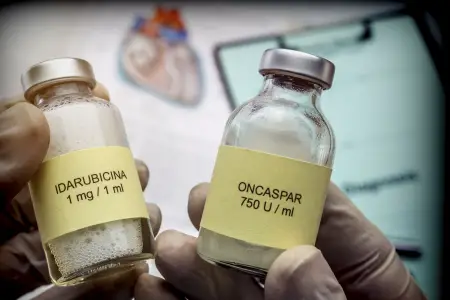Stem Cell Banks
Stem Cell Banks And Stem Cells
Despite the fact that the research of stem cells has grown exponentially over the past few decades, there is still quite a lot of missing pieces in understanding the full potential and nature of these cell lines. Stem cells contain an immense therapeutic potential in the opinion of experts in the field stem cell biology. Therefore, many leading regulatory authorities worldwide have embraced the significance of stem cells and approved them for the treatment of some very serious medical conditions what created the requirement to store them through stem cell banks.
The initial knowledge about the existence of cells that may develop into mature and differentiated cells lines was recognized by the scientists approximately a century ago. During the 20th century, a lot of effort has been made by the scientific community to comprehend the nature and explain the biology of stem cells with a milestone to exploit the extraordinary potential of stem cells in the field of human medicine.

Stem cells can be defined as cells that hold the unlimited potential for self-renewal and differentiation into mature cell lines. Stem cells in the adult organism represent a sort of a pool of cells that are included in self-repair mechanisms for many human tissues. They are able to divide and create new stem cells even after prolonged intervals of inactivity, or, under certain stimuli, they may differentiate and create mature cell types including heart muscle, the brain cell or, for example, a red blood cell. However, not all of the stem cells are completely identical, meaning that there are several types of these cells, containing different biological characteristics. Stem cells deriving from an embryo are called embryonic stem cells. Those that can be found in adult tissues are named adult stem cells. A relatively recent discovery in the field of stem cell biology introduced a method to create stem cells from adult, differentiated cell lines by using the genetical reprogramming. This type of laboratory-made stem cells is called induced pluripotent stem cells.
The field in which the therapeutic potential of stem cells is being investigated is called regenerative medicine or reparative medicine. In the area of regenerative medicine, efforts are made to recognize the biological properties of stem cells and to utilize these properties in order to create cell-based therapies that may be used in the treatment of many severe and debilitating diseases such as heart failure, diabetes or Parkinson’s disease. For these uses, it is mandatory to store these cells thrugh stem cell banks. Currently, stem cell research is one of the most advanced and fascinating areas of contemporary medicine, since it offers a variety of potential solutions to current health issues such as the global epidemic state of some communicable, as well as non-communicable diseases.
Importance of Stem Cell Banks
Once we have understood the power and importance of stem cells, its sources, let’s have a look at some of the top reasons to go store them in stem cell banks:
Since these are young cells with the ability to differentiate into various cells of the human body they can be used to treat diseases that cannot be treated by chemical drugs. They can be used to treat diseases of blood, cancers. In fact, they can be used to treat just any possible ailment. Almost 4000 clinical trials are going on at present regarding the applications of stem cells, partly thanks to stem cell banks.
They can already be used to treat the diseases of blood like sickle cells disease, thalassemia, and various blood cancers like leukemia. It is estimated that almost 27 million babies are born each year with various diseases of the blood, and many of them die at an early age. With the help of stem cell therapy, and stem cell banks, most of these lives can be saved.
It is like an insurance. Otherwise when required, it is extremely difficult to find matching cells in stem cell banks; thus if a person has stored in stem cell banks any kind of stem cells, they may serve as an insurance for the entire family. Stem cell banks have these stem cells immediately available at the time of need; it ensures that at the time of necessity critical time would be saved: the required samples are retrieved from the corresponding stem cell banks and it can be transplanted. Otherwise the person may spend days or even months for finding the right kind of cells, in stem cell banks and in the end, there are no guarantees that he will find a corresponding match.
Ensuring that any new kind of cell therapy the becomes available in future would also be available to you. For stem cell therapy it is still a beginning, and we can expect that every few years researchers from stem cell banks, would be able to find the new uses of stem cells in medicine. At present they are studying the use of stem cell therapy to treat spinal cord injury, Alzheimer’s disease, heart disease, diabetes, Parkinson’s, and much more.
Stem cell banking is of particular importance for those who have a history of certain familial diseases like Alzheimer’s, Parkinson’s, heart disease, diabetes, stroke, as stem cell therapy may help to cure these conditions in the near future. It is clear that to enjoy these options, previously the cells should be stored in stem cell banks.
Options Available in Stem Cell Banks
Once the person has understood the importance of storing stem cells for future use in stem cell banks and has decided to go for it, next logical step is determining the kind of stem cell banks to choose from. For this, we have several parameters to choose the best stem cell banks, and also a comparison between stem cell banks in this article for you to decide.
At present, the two main kind of stem cell banks are available globally: the private stem cell banks, and the public stem cell banks. Though at some places hybrid banking options of stem cell banks may also be available.
Private banking option means that cells stored in the stem cell banks facilities remain the property of the owner. However, it is a service that comes at a price. One has to pay an initial processing fee, and the annual cost each year. Quite like choosing the financial banking, one must enquire all the conditions regarding the storage in stem cell banks before making a decision. One should not only consider the present costs but should also clarify the future costs or hidden costs of the stem cell banks. One should also know the kind of compensation one can expect from the private stem cell banks if anything goes wrong with their storage facilities. Quite like the financial sector, one must choose the stem cell banks quite carefully. One should look at their history and their customer base, and so on.
There are also public stem cell banks. This is a free service that is financed by the government. In public bank stem cell banks, one can store the stem cells. However, they are not the property of the owner and would be given to anyone in need because the concept is a donation. Thus public banks have their pros and cons: They provide stem cells for research and to anybody in need. They have a huge amount of stock for various needs. But there are no guarantees that one would get what he or she needs at the time of necessity. In this update of the article, we recommend to go to private cord blood banking and likewise, to private stem cell banks, so the stem cells retrevied, remain in your property.
But this does not mean that public stem cell banks do not have much importance. In certain conditions, they may be even more important than private stem cell banks. In specific genetic conditions, the patient cannot use his own stem cells for treatment, in such situation public stem cell banks can provide alternative stem cells that are free from the genetic defect.
Since both private and public stem cell banks have their own pros and cons, thus recently the third type of stem cell banks have emerged that provide the best of both the worlds. In these stem cell banks, one can keep stem cells as one would do in case of a private bank, but one can also donate these stem cells to someone in need in return for financial compensation.
Whatever the banking option one chooses, important is to remember that quality comes before the cost factor. Further, it is vital to store the stem cells as their need is going to rise in the future as researcher find out wider applications of stem cells in medicine. In prospect, these cells would surely provide the treatment for many diseases that are incurable at present, however, if one does not opt for storage in stem cell banks than he may have trouble in finding the stem cells in the time of need.
Stem Cell Potential Uses And Obstacles
Stem cells hold a promising therapeutic potential. The research behind the human embryonic stem cells aims to discover pathways and mechanisms by which stem cells differentiate into mature cell lines. It is now recognized that the genes play the most significant role in the stem cell differentiation process. Full understanding of this key element of the stem cell biology will enable treatments for diseases in which the underlying cause represents the abnormal division and differentiation of cells (cancer, birth defects).
By learning how to control processes of cell differentiation, scientists will be able to develop new, more efficient treatment modalities targeting the main underlying mechanism of disease development. Furthermore, stem cells offer advancements in the field of drug research. Creating pure, differentiated cell lines that mimic the characteristics of, for example, cancer tissue will enable easier testing of the novel investigational anti-cancer drugs. Today, healthcare systems are facing the increased necessity towards the transplantable tissues and organs, however, the available resources are significantly below the demands. Regenerative medicine aims to resolve this issue by using stem cells in the creation of perfectly functional and healthy human tissues and/or organs, storing previously these baby stem cells in stem cell banks.
However, medical experts are still facing obstacles when dealing with novel cell-based therapies. The safety of such treatment in humans is not yet fully investigated since multiple studies are still in the very beginning of the investigation process. Dilemmas regarding ethical issues, complex mechanisms that underpin the transplantation, engraftment and immune rejection of stem cells are still bothering the scientific community and can make stem cell banks less credible. In any way, stem cells represent the exciting field that offers hope in the development of novel therapeutic approaches and years of intense research are needed in order to overcome the obstacles. There are public stem cell banks that are promoting research, such as Carolinas. Also there are private stem cell banks that dedicate resoures to research, such as Viacord, CBR or FamilyCord, to name some of them.
Stem Cell Banks And Preservation
Brief History of Stem Cell Banks
Way back in the year 1983, a concept of using stem cells originating from the umbilical cord blood was proposed as an alternative source to hematopoietic stem cells isolated from the bone marrow. Only five years later, in 1988, more than thirty years ago, a boy named Matthew, who suffered from a serious illness called Fanconi anemia was the first to receive the hematopoietic stem cell transplant from the umbilical cord blood of his younger sister.
The boy fully recovered and is today in his early fourties living a healthy and normal life.
This was the key event that triggered further research and development in the area of stem cell preservation and banking. Previously, cord blood was discarded as the medical waste, since this biologic material was thought to have no medical significance.
Following Matthew’s successful recovery, other healthcare professionals used hematopoietic stem cells from umbilical cord blood to treat blood disorders, mostly leukemia. The success was evident. Umbilical cord blood was not only efficient, but was better tolerated by hosts, and there was a lower incidence of graft-versus-host disease. These findings were followed by the establishment of the first public cord blood bank, CryoCell, in the United States in 1993. This year, at the Dukes University, the first unrelated cord blood transplant was performed. With them, stem cell banks arrived immediately thereafter.
Although the importance of cord blood and stem cell banking was only realized in the 1990s, however, the beginning of stem cell therapy can be traced back to 1960s, when the first bone marrow transplant was carried out.
Food and Drug Administration (FDA) And Stem Cells
Umbilical cord blood was approved by the FDA to treat disorders related to the hematopoietic system – a system that produces blood cells. In other words, FDA approved the use of hematopoietic stem cells originating from umbilical cord blood. FDA recognizes both private and public stem cell banks. In order to pass the registration, any facility that collects, transports, processes and preserves cord blood has to meet standards that are strictly defined by this regulatory authority.
This means that each process that is relevant for cord blood banking is approved and regularly inspected by the FDA in order to meet the quality standards necessary for optimal and safe storage of cord blood units and become stem cell banks. However, cord blood stored for personal use or use by the close family members does not require any approval before the actual use. Still, private stem cell banks and facilities have to comply with any other good operational best practice including facility establishment, good tissue practice regulations, and perform a complete release of the unit to be transplanted etc.
Other competent institutions including AABB also inspect and monitor the cord blood processing and storage facilities for accreditation purposes. If the facilities, the stem cell banks, receive accreditation from AABB, this means that the facility complies with very high standards of practice that were defined by the AABB previously. Accreditation by AABB is one of the key categories in our cord blood banking reviews.
The Corporate View of Stem Cell Banks
Since the recognition of the tremendous therapeutic potential of stem cells derived from the umbilical cord blood, industry of preservation of stem cells has grown exponentially with stem cell banks. The number of private cord blood banks is increasing rapidly. Private stem cell banks offer services that include not only preservation of stem cells originating from cord blood, but also other sources such as cord blood tissue, baby teeth, menstrual blood and others. In our cord blood banking reviews we recommend a combination of cord blood and cord tissue. However, the scientific basis of banking multiple types of stem cells is still lacking. The industry of stem cell banks is most often relying on findings of some peer-reviewed science, and some of the major healthcare institutions. These findings are mostly preliminary and do not have a strong scientific value.
Accordingly, banking of stem cells from originating from new, alternative sources is risky. Stem cells from such sources are insufficiently investigated, their viability after thawing is debatable, and their use for stem cell transplantation is based only on theory and assumptions. Private stem cell banks claim that stem cells offer a wide range of treatment possibilities. Stem cells cure cancer, repair damaged tissues, treat autoimmune diseases and even radiation injury according to many private banking sources. However, these are only yet-to-be develop therapies with very low and preclinical levels of evidence. Therefore, we must pay attention to the current state of investigation when stem cell banks make these promises.
Banking stem cells from various sources are highly recommended by private facilities, but the question remains how useful these stem cells actually are. At the point when new treatment indications are well established, there is a high probability that banked units would no longer be viable for use. Therefore, many families are facing dilemmas and discussions with the stem cell banks if banking of stem cells originating from alternative sources such as molar teeth or menstrual blood will be proven as beneficial for their health issues.
Stem Cell Banks: Pros and Cons
Banking of stem cells has become increasingly popular practice for parents living in the United States and in the European Union. Many parents choose to store cells in stem cell banks from various sources including cord blood, cord tissue or baby teeth driven by the idea that stem cells will be able to treat pretty much every serious disease in the near future.
However, the reality is that many studies investigating the potential of different types of stem cells are at their early beginnings. It is important to be aware that banked units may not be viable for use when the new area of treatment becomes approved. In the following paragraph, some of the pros and cons of using stem cell banks will be discussed.
1. There are approved treatments that may cure severe diseases using stem cells
Hematopoietic stem cells are approved by most of the relevant regulatory authorities for the treatment of serious blood-related disorders. Therefore, storing cells in stem cell banks from the umbilical cord blood is worth doing.
2. Stem cells may not be effective for the child whose umbilical cord blood has been banked
If the child developed the illness with an underlying cause that involves genetical factors, stem cells from the child’s own cord blood would not be usable for treatment, since they are identical to the cells that already expressed illness. Stem cell banks usually inform this to their potential customers.
3. Banking of stem cells from the umbilical cord blood is safe.
Collection of cord blood for preservation purposes is a safe, painless and relatively simple procedure using a cord blood collection kit. It takes a few minutes except there are nuchal cord complications. Risks to the mother or to the child are practically negligible when compared to the procedure of extracting stem cells from the bone marrow, which carries severe risks for a donor.
4. Expiration date
Banked stem cell units may not be viable at the time when the person whose cells were stored in stem cell banks develops an illness which can be cured by using cell-based therapy.
5. Possibility to donate
Each family has an option to donate stem cells for free in public stem cell banking facilities. By donating, the issue regarding the shelf-life of stem cells is resolved, since they will be donated to patients requiring cell-based treatment as soon as needed.
6. No firm scientific background
Banking of various sources of stem cells such as menstrual blood, or baby molars is not yet fully investigated. There are still gaps in the knowledge regarding this specific types of stem cells including their viability and nature. Treatment modalities using this type of stem cells are still being investigated and studies are at their early beginnings. Only umbilical cord blood banking and the storage of cells performed by stem cell banks.
7. Research and development
Storing stem cells for research and development purposes in public or hybrid stem cell banks will significantly help the scientific experts to test and establish new treatments that involve the use of stem cells. There is a promising future linked to the use of cell-based therapies. Stem cells are currently one of the most investigated biologicals since the medical scientific community is convinced that stem cells hold a potential to treat many of the serious and debilitating health issues. Regenerative medicine is at its early beginnings, but considering the number of efforts invested in recognizing the potentials of stem cells, new stem cell-based treatments are just behind the horizon.
Medicine in the 21st century belongs to stem cell therapy. Many of the philanthropists and health science researchers are already predicting that soon death would be a matter of choice or accident. In few decades we would be able to grow, regrow, repair, most of the organs. All this would be possible, as we gain mastery over the stem cell therapy. Another name for medicine that uses stem cells to treat diseases is called regenerative medicine.
It would be right to say that stem cell therapy has already left behind its infancy and is fast moving towards maturity. Today, hundreds of treatments are in last stages of clinical trial. In coming decades, we would inevitably see many of these therapies being approved by the regulatory bodies. In fact, some of the treatment forms involving stem cells have already approved in the United States. At present, there is a great success in regenerating blood tissues, immune cells, and some of the other organs.
How Do Stem Cells Differ From Cord Blood Cells?
For non-medical people various terms used to describe stem cell technology could be confusing. Cord blood is not precisely stem cell, but it is stored for extracting stem cells from it. It means that cord blood is a kind of crude product that is rich in various known and unknown stem cells, whereas, stem cells are more of a refined product. Both are stored by stem cell banks.
Cord blood is not precisely stem cell, but it is stored for extracting stem cells from it. It means that cord blood is a kind of RAW product that is rich in various known and unknown stem cells, whereas, stem cells are more of a refined product. both are stores by stem cell banks
A stem cell is a name given to various cells that have the ability to multiply and differentiate into just any other body tissue. As an example, we may isolate a particular kind of stem cell from a specific part of the body like bone marrow, adipose tissues, or we may extract them from cord blood and tissue, in rare cases they may be extracted from the embryo, and then use them to treat diseases or regenerate organs. Each source of stem cells has its pros and cons.
Among all the sources of stem cells, best kind of stem cells with the ability to grow into any other body tissue is extracted from a human embryo, however, as one can guess there are many ethical issues related to it. Embryonic stem cells are created after the artificial fertilization of human egg cell and sperm; thus it is seen as experimentation with the early human life form. Stem cell therapy with the use of embryonic cells is banned in many nations including the United States.
However, ban on embryonic cells should not be confused with stem cell therapy, as therapy with stem cells derived from other sources is allowed in the United States and other nations such as the European Union. There are no ethical issues related to cord blood cells, cord tissues, amniotic fluid. Similarly, in specific cases stem cells may be derived from donor’s bone marrow, adipose tissues, or other tissues.
Thus, stem cells are early seed cells with the capability to differentiate into the various type of cells and are derived from various body tissues. They may also be obtained from cord blood, whereas cord blood is the blood from the umbilical cord that is extracted from it after the child’s birth.
Since researchers knew that blood is the one organ that continues to regenerate actively for whole life, they started to study the process of formation of blood or hematopoiesis. It led to the discovery to stem cells in the bone marrow. For long researchers did not know any other source of stem cells. But then they paid attention to the embryo and early stages of human development. Though they were able to extract the stem cells from the embryo, soon the experiments on embryo were banned due to ethical reasons.
It forced researchers to look for other sources of stem cells elsewhere. Soon they identified that cord blood is rich in it, followed by cord tissues, both these materials are rejected after the childbirth. Later they found that these stem cells are present in just any tissue/organ of an adult human, though in very small quantities and thus these cells are challenging to extract.
Properties of Stem Cells
As per conventional definition stem cells are those cells that possess two fundamental features that are not there in other body cells, these are the ability of self-renewal and potency.
Self-renewal is the ability of stem cell to multiply into similar kind of cells and produce the differentiated daughter cells. Simply said they could increase in number and at the same time produce a certain type of organ tissues. A cell that cannot multiply would be of little use, and then it would be like any other body cells. Multiplication is essential for regeneration.
Potency is the ability of stem cell to differentiate into the various type of body tissues. Just imagine if we had a cell (like a seed) that could be used to regrow just any organ. Then we would be able to repair any body organ or even recreate it.
A stem cell that with the ability to differentiate into just any type of cells are called totipotent or omnipotent. Such kind of cell can be used to grow the complete functional organism.
Pluripotent cells have the ability to grow into just any kind of cells.
Multipotent stem cells can differentiate into a limited number of other cells types that are related to them, whereas unipotent cells can only regrow into their own cell types.
Thus as we can see that higher the potency, better the stem cell, therefore in theory totipotent cell is most potent as it can be used to repair any organ, in comparison unipotent is least useful as it can only fix one kind of organ or tissue.
Cells derived from cord blood and tissue, bone marrow, and other sources are mostly multipotent. However, this does not mean that we have limitations. Researchers have found the ways to genetically alter these multipotent cells and convert them into pluripotent cells. It means that in lab conditions they have achieved the ability to regrow practically any body tissue.
Thus researchers can grow the cells that can be used to create blood, liver, pancreas, joints, muscles and so on. We are on the verge of revolution. That is why it is important to store the cord blood or just any type of stem cells in private or hybrid stem cell banks.






